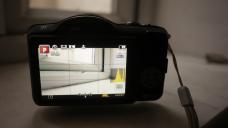
-
Thanks @itimjim , I can't wait for video samples. Looks promising tho.
Also Just to note that other camera without the multi aspect sensor might not vignette with the tokina 11-16 (GH3, etc). Also since the Blackmagic Cinema Camera has a slightly smaller sensor than most MFT camera's like the GH3, it will more than likely not vignette.
-
@Brian202020 I forgot to mention that, you are 100% right. I'm almost 99.999% sure that the vignette won't occur on GH3. In fact, next post will be from GF3 which has same sensor size. 100% won't vignette on BMCC or BMPCC.
Just did an additional light gathering test with the internal light meter on spot, plus shows the vast wideness difference between with and without :-).
Spot the difference! Both at 11mm, wide open. Accurately shows 1 stop more light. With the GH2 sensor being 1.83 crop in 16:9, I believe this gives more of a APS-H (1.83 x 0.71 = 1.2993) format than anything. Please someone correct me if I'm wide of the mark there.
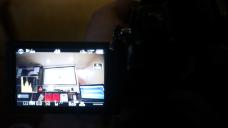
 P1010997.jpg2000 x 1124 - 297K
P1010997.jpg2000 x 1124 - 297K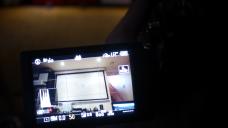
 P1010998.jpg2000 x 1124 - 297K
P1010998.jpg2000 x 1124 - 297K -
There is a video test someone of our members did with the Nikon G to MFT Speed Booster and a BMCC MFT.
-
Used the Metabones Contax adapter this past weekend and absolutely loved it. Using a GH2 with Moon 5 and a Zeiss 50 1.4. Attached some images to show the sharpness, color, and bokeh of the lens with the Metabones. These are screen grabs right of the camera. No color correction or post work done.
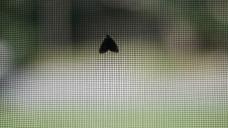
 GH2_Zeiss50_Close_1-4.jpg1920 x 1080 - 2M
GH2_Zeiss50_Close_1-4.jpg1920 x 1080 - 2M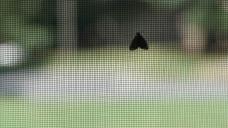
 GH2_Zeiss50_Close_2-8.jpg1920 x 1080 - 2M
GH2_Zeiss50_Close_2-8.jpg1920 x 1080 - 2M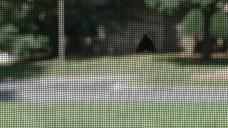
 GH2_Zeiss50_Close_11-0.jpg1920 x 1080 - 2M
GH2_Zeiss50_Close_11-0.jpg1920 x 1080 - 2M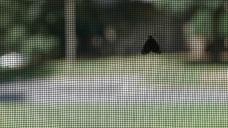
 GH2_Zeiss50_Close_5-6.jpg1920 x 1080 - 2M
GH2_Zeiss50_Close_5-6.jpg1920 x 1080 - 2M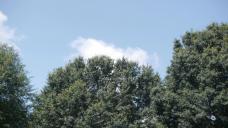
 GH2_Zeiss50_wide_2-0.jpg1920 x 1080 - 1M
GH2_Zeiss50_wide_2-0.jpg1920 x 1080 - 1M
 GH2_Zeiss50_lowlight_1-4.jpg1920 x 1080 - 980K
GH2_Zeiss50_lowlight_1-4.jpg1920 x 1080 - 980K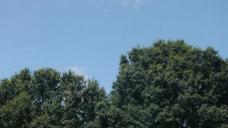
 GH2_Zeiss50_wide_11-0.jpg1920 x 1080 - 1M
GH2_Zeiss50_wide_11-0.jpg1920 x 1080 - 1M
 GH2_Zeiss50_lowlight_2-0.jpg1920 x 1080 - 1M
GH2_Zeiss50_lowlight_2-0.jpg1920 x 1080 - 1M
 GH2_Zeiss50_lowlight_2-8.jpg1920 x 1080 - 1M
GH2_Zeiss50_lowlight_2-8.jpg1920 x 1080 - 1M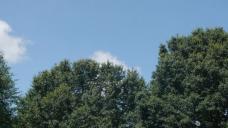
 GH2_Zeiss50_wide_5-6.jpg1920 x 1080 - 1M
GH2_Zeiss50_wide_5-6.jpg1920 x 1080 - 1M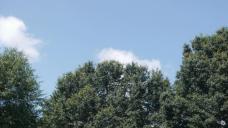
 GH2_Zeiss50_wide_2-8.jpg1920 x 1080 - 1M
GH2_Zeiss50_wide_2-8.jpg1920 x 1080 - 1M -
Early impressions wide open at full wide on the Tokina 11-16 aren't great - the edges look very mushy. I'm going to do a few more tests before I put the images up, just in case it was something I was doing wrong. I was looking after a toddler at the time.
The video I took looks good as it must have been f8-22. Stills I had the shutter up at 1/4000 @ 2.8 which is where it looks like it's falling apart. I'm gonna have to do some more testing to see what is what and make comparisons with it on and off.
-
Someone out there who is getting the Speed Booster and can test the 12-24mm Tokina for example? Maybe a cheaper alternative and it´s maybe working better wide open. (Because it´s not as wide AND not as fast as the 11-16.) Or the new Tokina 12-28mm - For sure also a nice alternative (because it´s a little bit longer too - especially compared to the 11-16).
-
@itimjim with softness on the 11-16 and @all for general knowledge.
Don't forget that the Metabones SB has an infinity adjustment: http://www.metabones.com/smart-adapter-operation-manual/155-infinity-adjustment-speed-booster-only
While MB states it has been set at the factory, it has been set to the theoretical standard of the M4/3 flange focus distance (FFD) not to your 2 year old GH2. Likewise your lenses, esp. old Nikkor lenses may not have the best back focus calibration any more either. Before we label the performance of the Nikon to MFT SB, we need to do some camera assistant work.
Our gear might not have gotten the most gentle treatment and the GH2 being a plastic body I would expect the sensor to not be exactly to the micron where it was when it left the Panasonic factory. Still cameras overcome these small variances in FFD & back focus tolerance by having lenses that focus beyond infinity and letting the autofocus take up the slack (ever seen an autofocus adjustment in the menu of a Canon or Nikon?). Also changes in temperature can cause the flange (aka: lens mount) to sensor distance to shift (AKA: flange focal distance or FFD). Set it in the Winter indoors at room temperature and it may be different outdoors in subfreezing weather. It may also be different from body to body. As long as you are not on an ultra wide and ultra fast prime, you may not even notice (the 12mm 2.0 Oly or the 12mm 1.6 SLR magic hyperslime lens come to mind).
More on FFD: http://en.wikipedia.org/wiki/Flange_focal_distance
Now that we are introducing an additional module (the SB) into the optical formula, a module that has no communication with the brain in the camera body about sharpness we may start to see FFD and back focus issues.
I think this is what @itimjim has discovered on the 11mm end of the 11-16 zoom wide open at 2.8. This is the point of the lens that is the most critical for the back focus and therefore, if the camera, the lens, or the SB in between is off, this is where it'll show up. Since we'd all like to get a Sigma 18-35 f1.8 and slap it on the SB we as PV need to talk about some potential issues.
We covered FFD above... What's back focus? ...Some theory:
Depth-of-Field: the area of acceptable focus in front of the lens. Depth-of-Focus: the area of acceptable focus BEHIND the lens. Aka: back focus, aka: collimation.
FFD is the distance from the mount to the sensor. Back focus is the rear projection of a lens' Depth-of-Focus. Collimation is the measured confirmation that the back focus is in spec for the lens mount. That the back focus can hit the sensor. Read the part on Optical Collimators: http://en.wikipedia.org/wiki/Collimator
Physics: At a fixed focal length and fixed aperture, the more Depth-of-Field you have, the less Depth-of-Focus you'll have and vice versa. That means those fast wide primes we all are begging for, will also reveal if there is an issue with our camera or lens, but only in combination.
Close the iris and you'll get more of each DoF.
Choose a wider angle lens, and you'll get more DoF in front and less DoF behind the lens. That's why the 11-16 w/SB is failing @itimjim at 11mm wide open.
In Practice:
On ENG video cameras the lens must be "set" to the body using the back focus adjustment. This literally adjusts the rear "DoF" on to the sensor. You set the sweet spot using a monitor. ENG bodies see a lot of travel and flange focal distance might be a little "off" after awhile. No problem since the ENG lenses all have a back focus adjustment. This is the only "flexible system" I know of. All others: Still and motion picture cameras, this is set at the factory and either never checked again (stills) or checked every time the camera and lenses go out on a job (motion picture).
Camera owners, esp. inexperienced RED owners are suddenly faced with having to be their own camera tech and learn how to do this themselves and/or buy the "RED (FFD) Focus". Red does have a FFD adjustment. http://www.reduser.net/forum/showthread.php?75661-Backfocus-Adjustment-WITHOUT-Red-Focus
Here Doug Underdahl shows how to adjust the FFD on the REDone:
By adding the SB we are screwing with the optical path. I believe since the SB reduces the apparent field of view, increases the stop, giving us a quasi APS-c look on MFT, it is also reducing the Depth-of-Focus (rear DoF). A thinner area of acceptable focus behind the lens will yield less margin for error. These tolerances are measured in hundredths of a mm. Less than the thickness of a human hair.
If you have a lens that isn't good on the SB: - Is it the only one? If yes and the rest are good, it is probably due to the individual lens. It might need to be re-shimmed or the focus scale re-calibrated. - Is it the widest one and all the rest are good? It might be the SB's infinity adjustment. Verify it is not the lens by shooting with out the SB, lens wide open. If that's sharp then it's clearly due to the SB...
Adjust the SB. Do it right the first time:
Prep the SB: The process for the SB is similar as Doug demonstrates except we can't adjust the SB while seeing a live image. I'd suggest to anyone having an issue to 1st mark the point where MB has set it. I'd call this zero and I'd want it to never wash off so I'd probably score it with the tip of a screw driver. you want to do this in 2 places, one on the metal housing of the element you are going to rotate and the other on a fixed part of the metal holding that moving metal part. Then I'd take a permanent felt tip marker and make some small marks every 2mm or so. Designate one side as "+" and the other as"-". This will allow you to get back to zero (MB calibration) and calibrate with a systematic and repeatable method.
Calibrate the SB: Watch Doug's video. Create some dim controlled lighting so you can shoot wide open without a filter (if in video mode) or choose to do it in stills mode. Choose your widest and fastest TRUSTED lens (watch Doug's video for an explanation). Preferably a prime lens (not a zoom). You'll want set things up like Doug recommends, (use the largest monitor you have), and 1st try calibrating at 1 meter. Then instead of moving your RED's giant screw like lens mount, you'll want to set your SB to each of the marks you made and then record an image, note in the frame what your SB is set to (-2, -1, 0, +1, =2, etc.). When done, review your images and you will hopefully notice some are sharper than others. Then repeat until the SB is in the sweet spot.
Why @1 meter? My lens and camera tech friend in Zurich explained to me that all lenses markings are interpreted from the 1 meter mark. The manufacturers make 1 meter dead on and then interpret where 2 meters, 4, 8, etc. should be. Lets face it still lenses do not have the precision markings of cine lenses, but, it;'s a good place to start. If 1 meter works, then check a 2nd distance, then check infinity. If all 3 are good, your SB lens combo is good. If 3 lenses all look good your SB calibration is complete.
In the case of the 11-16 being your fastest and widest lens, well, calibrate your SB at 11mm @wide open and then check the SB on your next widest prime lens. Zooms have their own set of issues with back focus irregularity, that we don't want during calibration and I don't want to get into here.
Finish the job: Then check your SB on all your lenses and if one or two are showing poor results, but your widest angle lenses with wide open aperture are as good as they are without the adapter, then the problem is clearly in the lens and you can rule the SB out.
If you have a second body, repeat w/ the SB (now calibrated to Body A) on body B with the same lens that you used for calibrating body A. I'd cross my fingers for you that it comes out the same, because I can't tell you how to make your MFT cameras' FFD match. However, if different you could mark the SB's sweet spot for body A and body B. If you lend it to a friend with a 3rd body, they should repeat this process, adjust only if necessary and not rub out your marks!
I think in time we will see if there is much variance between MFT bodies, MFT manufacturers and hopefully we'll be able to rule out variance of the FFD in the camera body and just be able to focus on lenses.
Worth noting is that @Voldemort (I think that's you AR) also had to calibrate his preproduction SB in this review: http://www.eoshd.com/content/10375/metabones-speed-booster-for-micro-four-thirds-first-look-and-gh3-images "My adapter is a beta version for testing, it was far off infinity when it reached me and finding infinity yourself is quite time consuming – a process of trial and error and lots of tiny adjustments, but it is relatively straight forward – just a case of rotating the rear element in small steps." -Maybe he can chime in here?
Maybe MB has a simplified explanation how to do this, but, this is the full story as to "why" this needs to be done. It is done on every motion picture camera and lens coming out of a professional rental house, every time.
I wrote this up so that @itimjim could get the best performance out of the SB for himself and his review (and let us all know :-)
DISCLAIMER: I worked for Doug Underdahl in college and learned an incredible amount of good sh!*t from him. I do not work for him or MetaBones. I do hope the Nik/MFT SB is good and that I'll be able to afford one soon.
-
@Cfreak great and interesting post.
One thing that leaps out at me is when you mentioned infinity focus. What I noticed in the short time I was testing (ahem!...messing about), was that the lens focused waaaaay past infinity. Not sure what that means yo be honest, but it didn't feel right.
I'm still nuts busy with work in the real world, but I'll try and get those images on tonight.
-
Hi All, I also posted this on DVXuser but I knew there was an active discussion here since I was looking for samples earlier.
I just got the Nikon G to m43 today and I did a quick test that I thought might be useful for us GH2/3 users.
This isn't a scientific test by any means, but it does show that a.) things look brighter, and b.) the FOV is wider! The 20mm Sigma 1.8 fully opened on a full-frame camera gets soft on the edges, so it was no surprise to see it get soft on the edges using the SB adapter. It's soft on both versions really.
The last bit on the video was a 20mm w/ and w/o the SB zoomed in on roughly the same spot. Of course the wider SB shot needed to be zoomed in more in order to match the non-SB shot.
Also worth noting, this is by far the best fitting adapter I have ever used. It takes a bit of effort to connect it to the camera body but there is a very reassuring click when it engages. Having half stop marks is nice too. I mostly got this so I could start using my 100mm in a room smaller than an arena and to finally have a nice wide 20mm in tighter spots.
Hope this helps.
-J
-
I spent a couple of hours today testing my Metabones SpeedBooster with a selection of three lenses and my BlackMagic MFT. I'm very pleased with this combination, and look forward to shooting some people (models) this Friday.
I shot this with ProRes mode using basic CFL lighting. Camera was 1.6m from the wall.
-
Here's the photo download I was talking about... (linked to G+ to save PV bandwidth)
https://plus.google.com/photos/105784973028526681526/albums/5898721427233119505
Click on the image, click on the more drop down and choose download photo
Tim
-
itimjim, I need to read up, I figured only FF lenses would be guaranteed to cover the larger size of the optical glass thing inside the adapter properly. Was the above pic snapped at about 11mm widest setting? That is a sweet lens and it would be terrific if it works.
I'm planning to spend more time with the adapter this evening, so I'll report back if I see what you saw. I've only been buying FF lenses with the assumption that one day I'd need them on a FF body, so I can't test any wider than my 20mm.
This thing kind of upgrades your GH2 to a full-frame for only $430, so I guess I'm sticking with m43 for a bit longer at least.
-Jeff
-
Thanks, that photo's about the same as the Light Cannon, well LC might have been worse, but neither are usable to me. Perhaps doing what CF said would help.
Here's my logic: 12/1.6 is decently wide, fast, and stout on MFT (BV1-MFT included). I like using it wide open, I like using it stopped down, MAYBE sometimes the flare can be crazy but, the cost of the lens.
It seems to make this really count, you have to be able to use it on a 14/2.8 at the very least. Not even wide open, but a 14/2.8 goes to about a 9.5/2.
Now that's interesting.
I suppose the 20/2.8 becoming a 14/2 is also pretty interesting, though.
Maybe I'm just trying to talk myself out of this. xD
Howdy, Stranger!
It looks like you're new here. If you want to get involved, click one of these buttons!
Categories
- Topics List23,993
- Blog5,725
- General and News1,354
- Hacks and Patches1,153
- ↳ Top Settings33
- ↳ Beginners256
- ↳ Archives402
- ↳ Hacks News and Development56
- Cameras2,368
- ↳ Panasonic995
- ↳ Canon118
- ↳ Sony156
- ↳ Nikon96
- ↳ Pentax and Samsung70
- ↳ Olympus and Fujifilm102
- ↳ Compacts and Camcorders300
- ↳ Smartphones for video97
- ↳ Pro Video Cameras191
- ↳ BlackMagic and other raw cameras116
- Skill1,960
- ↳ Business and distribution66
- ↳ Preparation, scripts and legal38
- ↳ Art149
- ↳ Import, Convert, Exporting291
- ↳ Editors191
- ↳ Effects and stunts115
- ↳ Color grading197
- ↳ Sound and Music280
- ↳ Lighting96
- ↳ Software and storage tips266
- Gear5,420
- ↳ Filters, Adapters, Matte boxes344
- ↳ Lenses1,582
- ↳ Follow focus and gears93
- ↳ Sound499
- ↳ Lighting gear314
- ↳ Camera movement230
- ↳ Gimbals and copters302
- ↳ Rigs and related stuff273
- ↳ Power solutions83
- ↳ Monitors and viewfinders340
- ↳ Tripods and fluid heads139
- ↳ Storage286
- ↳ Computers and studio gear560
- ↳ VR and 3D248
- Showcase1,859
- Marketplace2,834
- Offtopic1,320

